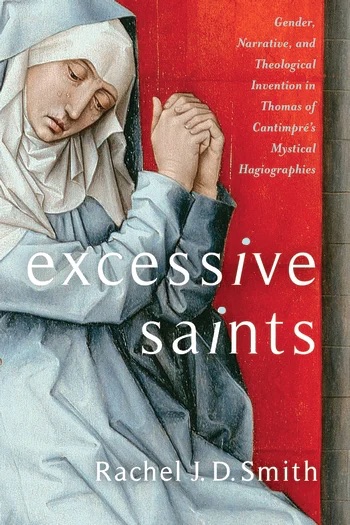For thirteenth-century preacher, exorcist, and hagiographer Thomas of Cantimpré, the Southern Low Countries were a harbinger of the New Jerusalem. The Holy Spirit, he believed, was manifesting itself in the lives of lay and religious people alike. Thomas avidly sought out these new kinds of saints, writing accounts of their lives so that these models of sanctity might astound, teach, and trouble the convictions of his day.
In Excessive Saints, Rachel J. D. Smith combines historical, literary, and theological approaches to offer a new interpretation of Thomas’s hagiographies, showing how they employ vivid narrative portrayals of typically female bodies to perform theological work in a rhetorically specific way. Written in an era of great religious experimentation, Thomas’s texts think with and through the bodies of particular figures: the narrative of the holy person’s life becomes a site of theological invention in a variety of registers, particularly the devotional, the mystical, and the dogmatic. Smith examines how these texts represent the lives and bodies of holy women to render them desirable objects of devotion for readers and how Thomas passionately narrates these lives even as he works through his uncertainties about the opportunities and dangers that these emerging forms of holiness present. Excessive Saints is the first book to consider Thomas’s narrative craft in relation to his theological projects, offering new visions for the study of theology, medieval Christianity, and medieval women’s history.
- Table of Contents
- Acknowledgments
- Abbreviations
- Introduction. Hagiographical Theology—Making Holy Bodies from the Word
- 1. Thomas of Cantimpré: His Life and Literary Activity
- 2. “With Wondrous Horror She Fled”: Dissimilarity and Sanctity in The Life of Christina the Astonishing
- 3. Gendering Particularity: A Comparison of The Life of Christina the Astonishing and The Life of Abbot John of Cantimpré
- 4. A Question of Proof: Augustine and the Reading of Hagiography
- 5. Language, Literacy, and the Saintly Body
- 6. The Uses of Astonishment: Apophasis and the Writing of Mystical Hagiography
- 7. Producing the Body of God: Exemplary Teaching, Jewish Carnality and Christian Doubt in the Bonum Universale de Apibus
- Conclusion
- Notes
- Bibliography
- Index

